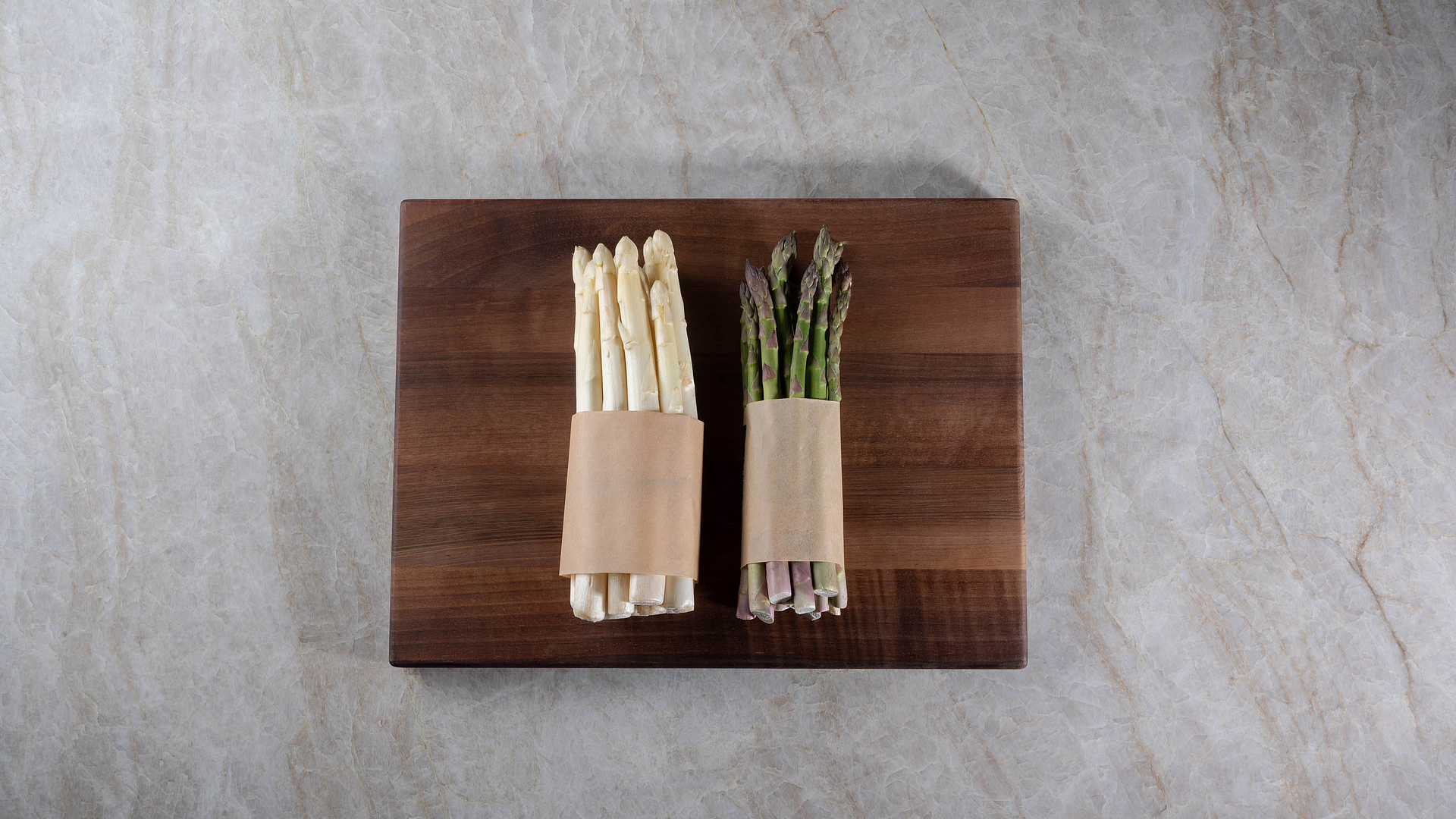
Asparagus season at last
Asparagus is delicious but can soon become stringy or hard. Here we’ll tell you what types of asparagus there are, the best way to prepare them and which asparagus is especially healthy. Asparagus most certainly should not be woody.
What types of asparagus are there?
In Germany, asparagus season starts in April and ends on the 24th of June. Asparagus is a very demanding plant that stops forming shoots if harvested too often. That’s why Spargelsilvester or ‘Asparagus New Year’ on the 24th of June is an important date for asparagus lovers. Of course, this can vary depending on the asparagus variety, weather conditions and country of origin.
In France, for example, purple asparagus is popular, wild asparagus grows very well in Mediterranean regions and Thailand also has its own asparagus varieties. White asparagus is the favourite in German kitchens. It grows in the ground under mounds of soil and is harvested by hand by cutting the stalk below the soil.
Also known as ‘edible ivory’, it is the lack of sunlight that gives white asparagus its colour, but if it does peep out of the earth before being harvested, the tip turns purple. Green asparagus grows above ground and so gets more sunshine. It reacts to the light by forming chlorophyll and turning green accordingly. Green asparagus is harvested by simply cutting the stalks. Its skin is thinner than the tough outer layer of its white counterpart.
How to cook, savour and grow asparagus
The subtle, mild flavour of white (and slightly purple) asparagus is traditionally a perfect match for potatoes and hollandaise sauce. But it also goes well with salads and (veggie) escalopes. Carefully peel the asparagus from top to bottom and snap or cut the dry ends off. It takes from twelve to twenty minutes to cook. Like pasta, it tastes best when it is not too soft, but al dente.
Green asparagus tastes nuttier and is above all used in Mediterranean cuisine. Because it is thinner, it only needs about eight minutes to cook and should also be al dente. Green asparagus does not need to be peeled as carefully as the white variety. You just need to remove the bottom third of the peel. Green asparagus is good for sautéing, for example, with a little rapeseed oil in the wok or on the Tepan grill.
Have you got a garden and would like to grow asparagus? Asparagus plants thrive in sunshine and sandy ground. The long roots require a hole up to 40 centimetres deep. It needs to be planted from April to the end of May and requires patience as it won’t be ready to harvest for three years.
The health benefits of asparagus
If you want to eat healthily, asparagus is a good option. Both the white and green varieties of the plant provide important vitamins such as vitamin A, C, E and K, as well as some of the B vitamins. You can also benefit from valuable minerals such as magnesium, iron, potassium, calcium, copper and phosphorous.
Just a single portion of asparagus covers your daily requirements of folic acid and vitamin C and the more light the asparagus gets before being harvested, the healthier it is. This makes green asparagus particularly appealing. Rich in vitamin C and with a high water content, this vegetable is also
low in calories: 100 grams of asparagus only contains 16 calories, so it’s good for your conscience too. However, asparagus may not be suitable if you have a high uric acid level in the blood or kidney stones. Otherwise, enjoy asparagus season! You can get really fresh asparagus at markets and farm shops – look for closed tips and avoid too much brown discolouration.